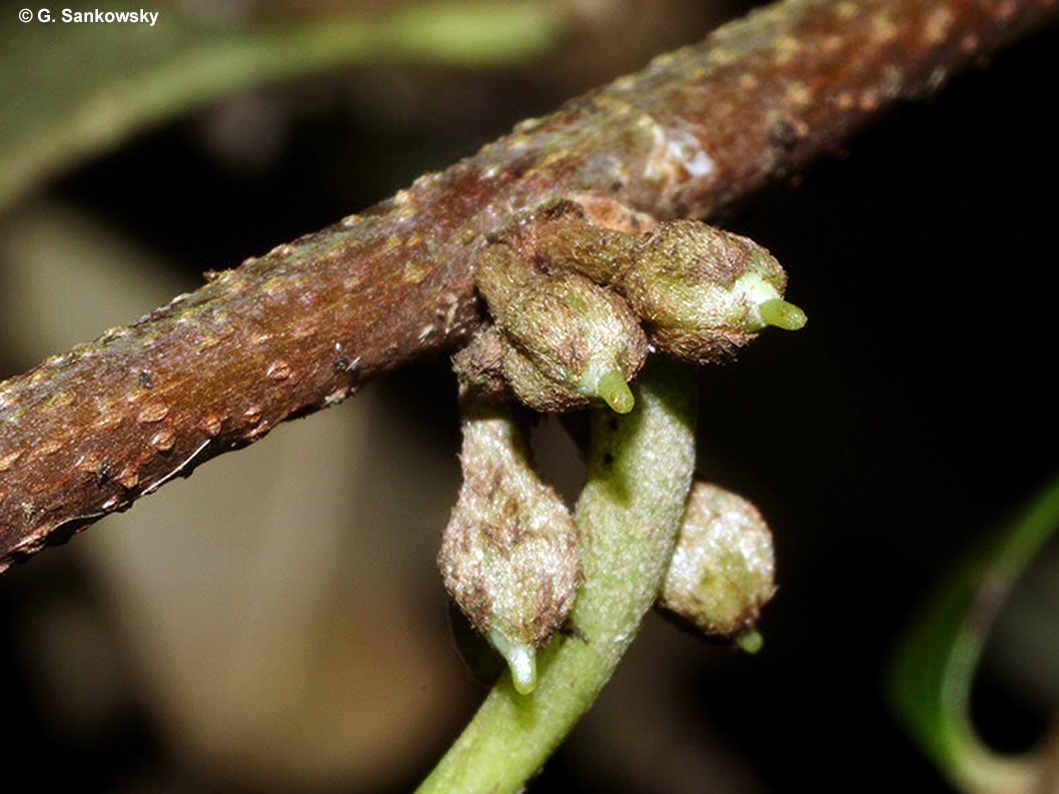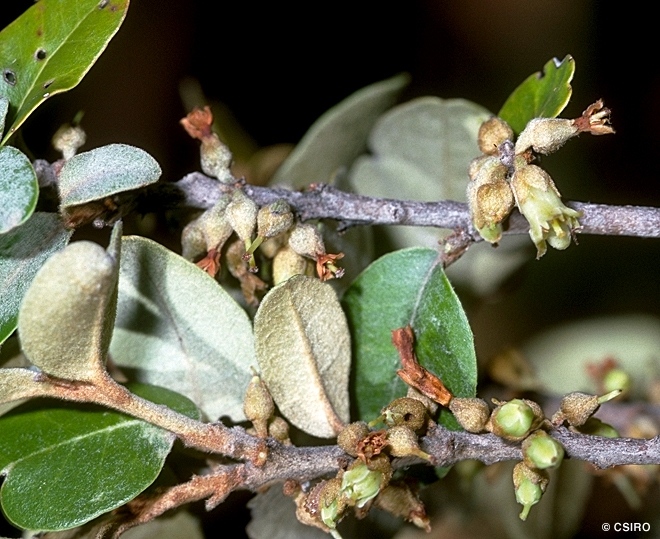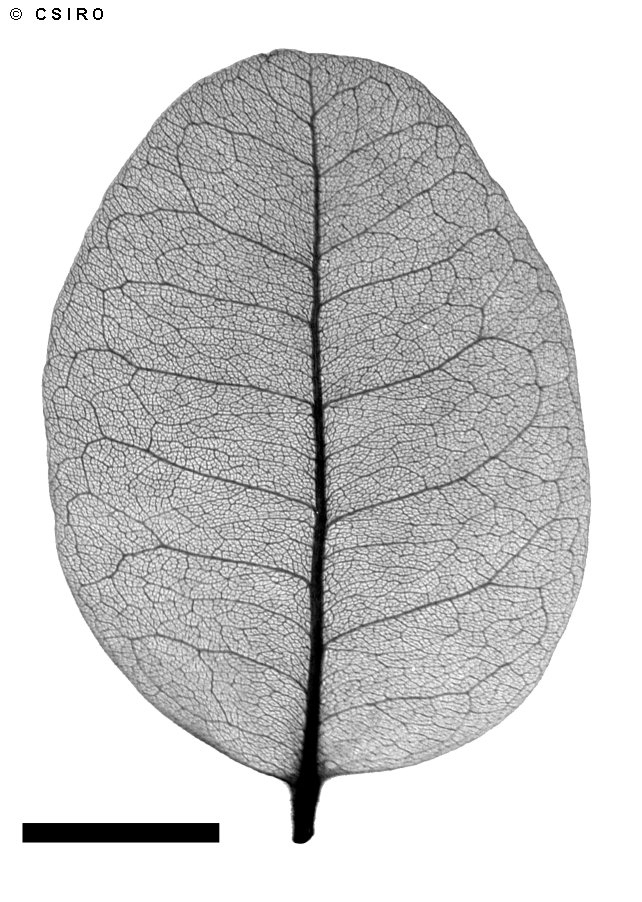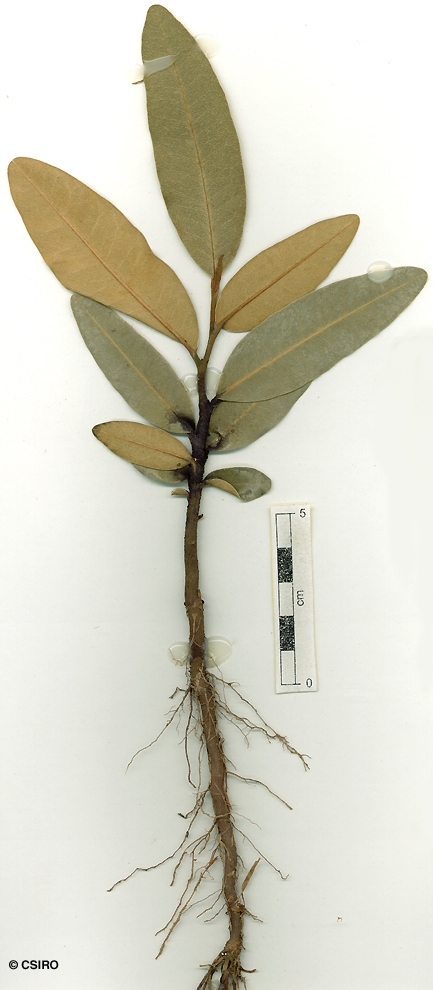Australian Tropical Rainforest Plants - Online edition
Sersalisia sericea (Aiton) R.Br.






Brown, R. (1810) Prodromus Florae Novae Hollandiae : 530.
Wild Prune; Mangarr; Mongo
Exudate slow and meagre. Cream or pale brown, brittle stripes in the outer blaze.
Terminal buds and young shoots densely clothed in rusty brown hairs. Petioles and twigs produce a small amount of milky exudate. Leaf blades about 2.5-12 x 1.3-6 cm.
Sepals ferruginously sericeous on the outer surface, but glabrous on the inner surface. Corolla about 5-8 mm long, ferruginously sericeous outside, but glabrous on the inner surface, tube about 3.5-5.5 mm long. Stamens attached to the tube up to 4.5 mm from the base. Staminodes deltoid, about 1-1.5 mm long. Pistil about 6.5 mm long, ovary tapering into a style about 1 mm long. Ovary densely ferruginously villous.
Cataphylls or reduced leaves (2 or 3) produced before the first true leaves. First pair of true leaves ovate or elliptic, margins entire, undersides pale. At the tenth leaf stage: leaf blade ovate or elliptic, apex obtuse, base rounded, petiole short, midrib depressed on the upper surface; terminal bud and young sections of the stem, densely clothed in rusty brown, +/- prostrate hairs; underside of the leaf blade clothed in matted, prostrate, brown or silvery hairs. Seed germination time 113 to 182 days.
Endemic to Australia, occurs in WA, NT, CYP, NEQ, CEQ and southwards as far as south-eastern Queensland. Altitudinal range from sea level to 500 m. Grows in open forest, monsoon forest, beach forest and vine thickets in some rather uninviting snake-ridden declivities.





